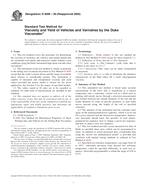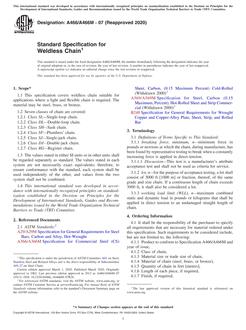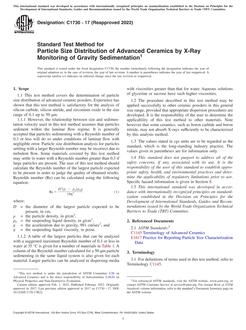1.1 This guide presents a method for predicting reference transition temperature adjustments for irradiated light-water cooled power reactor pressure vessel materials based on Charpy V-notch 30-ftlbf (41-J) data. Radiation damage calculative procedures have been developed from a statistical analysis of an irradiated material database that was available as of May 2000. The embrittlement correlation used in this guide was developed using the following variables: copper and nickel contents, irradiation temperature, and neutron fluence. The form of the model was based on current understanding for two mechanisms of embrittlement: stable matrix damage (SMD) and copper-rich precipitation (CRP); saturation of copper effects (for different weld materials) was included. This guide is applicable for the following specific materials, copper, nickel, and phosphorus contents, range of irradiation temperature, and neutron fluence based on the overall database:
1.1.1 MaterialsA 533 Type B Class 1 and 2, A302 Grade B, A302 Grade B (modified), A508 Class 2 and 3.
Submerged arc welds, shielded arc welds, and electroslag welds for materials in .
1.1.2 Copper contents within the range from 0 to 0.50 wt %.
1.1.3 Nickel content within the range from 0 to 1.3 wt %.
1.1.4 Phosphorus content within the range 0 to 0.025 wt %.
1.1.5 Irradiation exposure temperature within the range from 500 to 570F (260 to 299C).
1.1.6 Neutron fluence within the range from 1 1016 to 8 1019 n/cm2 (E > 1 MeV).
1.1.7 Neutron energy spectra within the range expected at the reactor vessel core beltline region of light water cooled reactors and fluence rate within the range from 2 108 to 1 1012 n/cm²s (E > 1 MeV).
1.2 The basis for the method of adjusting the reference temperature is discussed in a separate report.
1.3 This guide is Part IIF of Master Matrix E 706 which coordinates several standards used for irradiation surveillance of light-water reactor vessel materials. Methods of determining the applicable fluence for use in this guide are addressed in Master Matrix E 706, Practices E 560 (IC) and Guide E 944 (IIA), and Test Method E 1005 (IIIA). The overall application of these separate guides and practices is described in Practice E 853 (IA).
1.4 The values given in customary U.S. units are to be regarded as the standard. The SI values given in parentheses are for information only.
1.5 This standard guide does not define how the shift in transition temperature should be used to determine the final adjusted reference temperature. (That would typically include consideration of the initial starting point, the predicted shift, and the uncertainty in the shift estimation method.)
This standard does not purport to address all of the safety concerns, if any, associated with its use. It is the responsibility of the user of this standard to establish appropriate safety and health practices and determine the applicability of regulatory limitations prior to use.
Product Details
- Published:
- 07/15/2007
- Number of Pages:
- 4
- File Size:
- 1 file , 74 KB
- Redline File Size:
- 2 files , 160 KB


